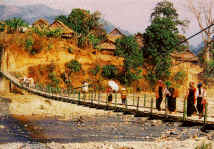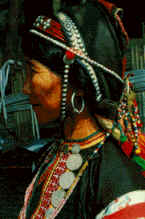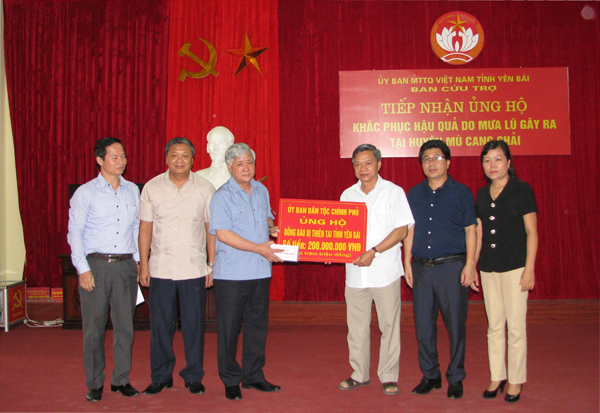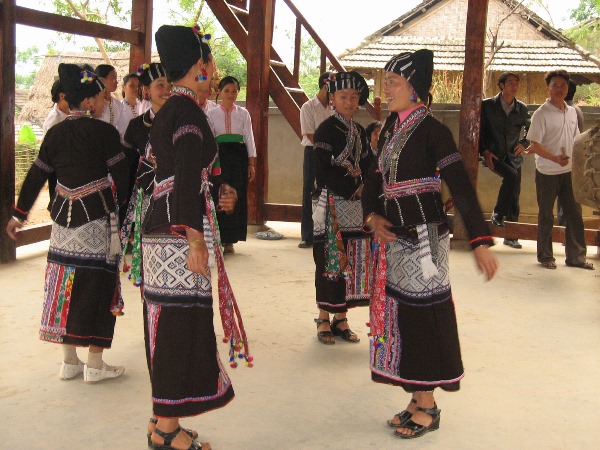In the former days, the La hu lived mainly on slash-and-burn cultivation, hunting and gathering with rudimentary tools including knives and hoes. In some recent decades, the La hu have cultivated rice in submerged fields and on burnt-over land as their staple food and used buffaloes as draught animals. La hu men are very skillful in making rattan chairs, trays, mats and flat baskets. Most of them know how to practice blacksmithing.
The La hu set up the villages on mountain slopes. Implementing the policy of sedentarilisation, a number of La hu villages have moved to the lowland. To replace their old temporary houses, they have built steadier houses, mostly level with the ground and divided by bamboo partitions. In the interior, the altar to the ancestors and kitchen are always placed at the bay used for the family owner' sleeping.
La hu men wear dress like that of other ethnic groups in the northwest region. Women wear trousers and a long-lap shirt falling to their ankles in ordinary days, and put on a short vest in festive days. The collar, chest stripes and sleeves are either embroidered or sewn with colorful pieces of cloth, silver or tin coins and red hinges
In a La hu family, the right of inheritance is reserved for the sons only. It is customary that the young men and women are flee to choose their partners and decide their marriage. After the wedding, the groom has to Iive with his wife's family for several years, then takes his wife to his house.
La hu women give birth at their bedroom. Three days later, the baby will be given true name. But Tan unexpected guest comes in the meantime, he or she is given the honour of naming the newborn.
The dead person is placed in the hollowed-out tree trunk. Neither funeral house nor protective fence are built on the grave. In fact, the worship to the ancestors is reserved for the dead parents. Differences are observed among the days and offerings that the La hu groups choose to perform venerations.
Every year, the La hu hold ceremonies to worship the genie of the earth to pray for peace, conjure up the souls of corn and rice after sowing and harvesting and worship the founder of blacksmithing
The La hu preserve a dozen of khen (pan-pipe) dances. Generally the young people like to play khen with bamboo-box. The songs are sung in the Ha nhi language but still kept their own rhythms. The La hu possess a rich treasury of ancient tales and private calendar in which the days are defined corresponding to 12 animals including tiger, rabbi, dragon, louse, sheep, monkey, rooster, dog, pig, squirrel and buffalo.






